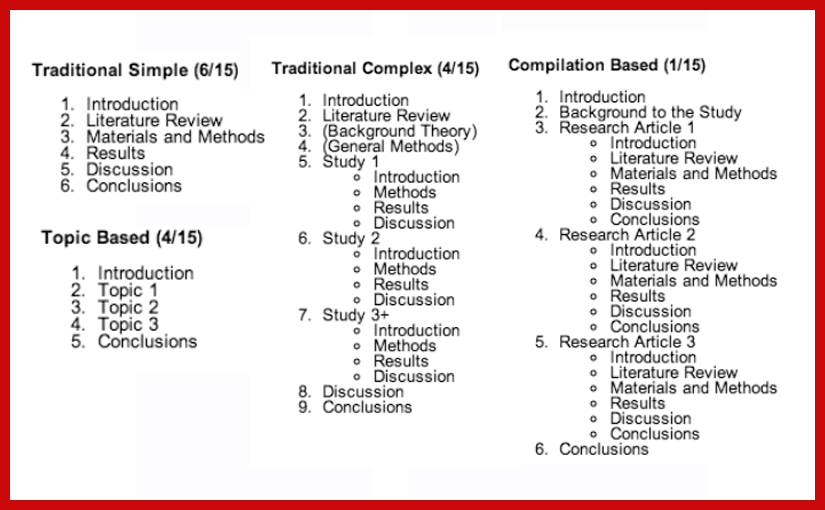Image based on Paltridge’s “Four Thesis Types”, cited by Niall McMahon.
In this series of posts I outline a variety of different ways to structure your PhD thesis. Decide on a structure for your thesis early on because it helps you to plan your reading, technical and practical research and your writing. Scroll down for more blog posts in this series that go into more detail about how to develop good writing habits and how to work with your supervisor.
The thesis IS the PhD – it is all the examiners have to go on. They do not know you. They don’t know, or care, how passionate you are or how hard you have worked. Every PhD thesis emerges through hard work and passion. In summary, to the outsider – your examiners – all that really matters is the thesis.
To create the diagram shown above, McMahon analysed eight dissertations, taking into account Paltridge’s analysis of “fifteen doctoral theses from a range of disciplines and the advice given in eight recent publications from around the English-speaking world”. The link has many useful references. I have never supervised or examined a thesis that uses the Compilation Based structure in the arts and humanities. However, it as it is fairly common in the sciences, including computer science.
Regardless of the particular thesis structure that you choose, it is good practice for PhD researchers to produce a draft structure in the first few weeks as it helps to focus your thinking and can be used to prioritise your reading and writing. It’s not a contract, but a ‘live’ document that alters over time. Having a structure mapped out helps both supervisor and researcher make sure the research is on track. Take a one page bullet point draft of your proposed thesis to your supervisor to discuss your plan of action. If you plan to add or drop a key theory or topic you can go back to your structure and see how that might impact your argument. You can also use this one page document and/or mind map of your thesis to find out of there is something missing that your supervisor is expecting. Use it to get feedback from your supervisor about whether or not a particular avenue is worth your precious time. But remember, it’s your PhD. You don’t have to agree with them!
Homework: If you have not done so already then prepare a structure using bullet point lists or a mind map. Schedule a meeting to discuss it with your supervisor, and send them the one page plan a week in advance of that meeting.
See also “Hints and Tips on (Science and Engineering) Bachelor’s and Master’s Thesis Writing” by Peter McMahon, May 2009. I came across this while searching for Niall McMahon (note they are two different scholars who share the same family name). Peter McMahon’s full text here. Although Peter McMahon is writing about Master’s thesis writing his tips are very useful to PhD researchers.
